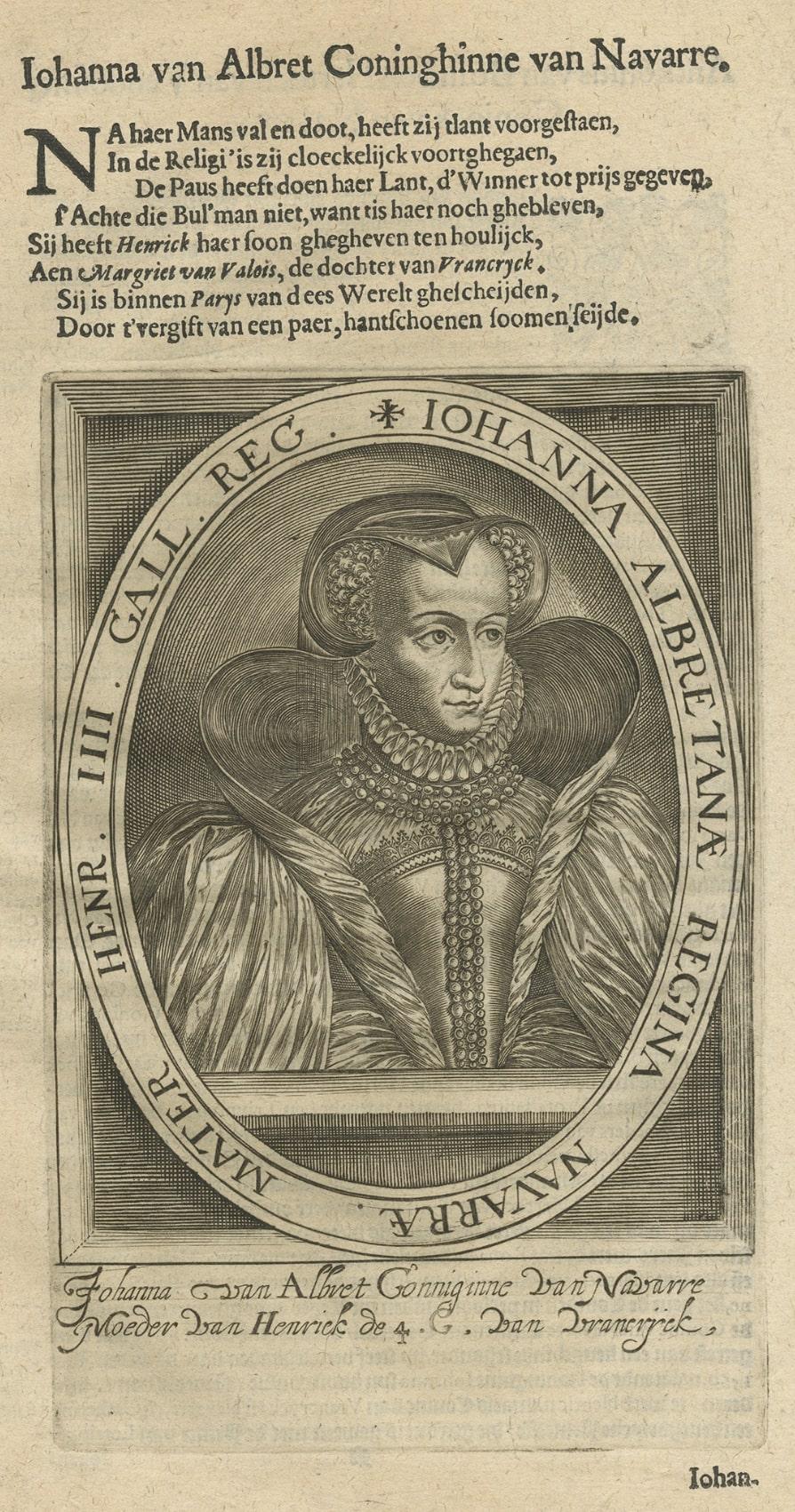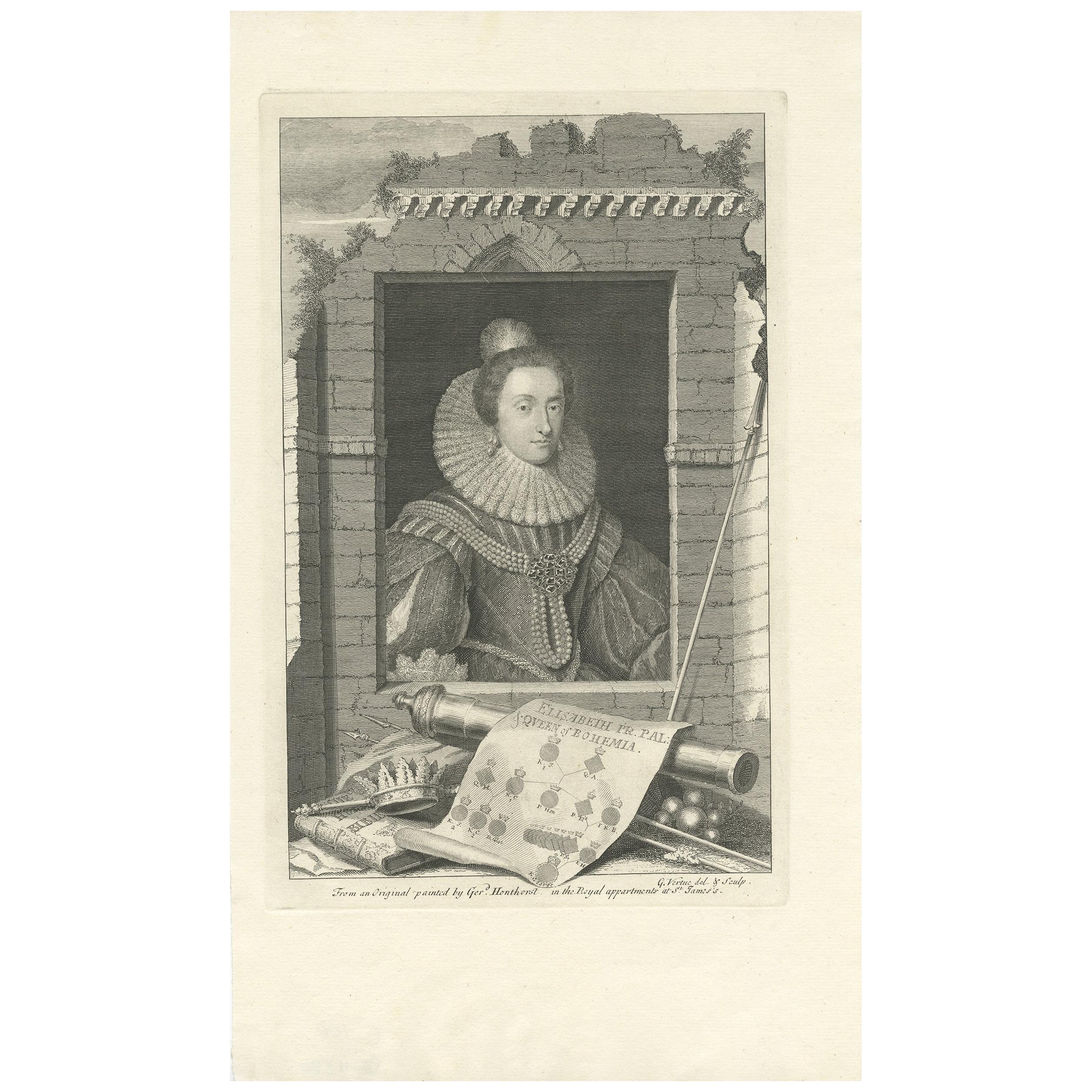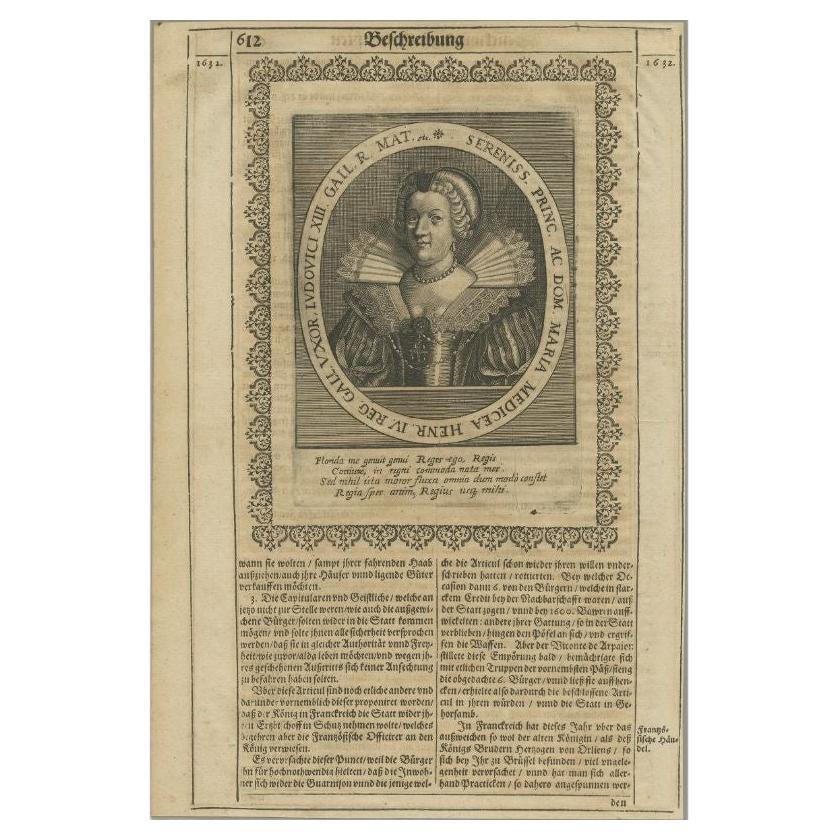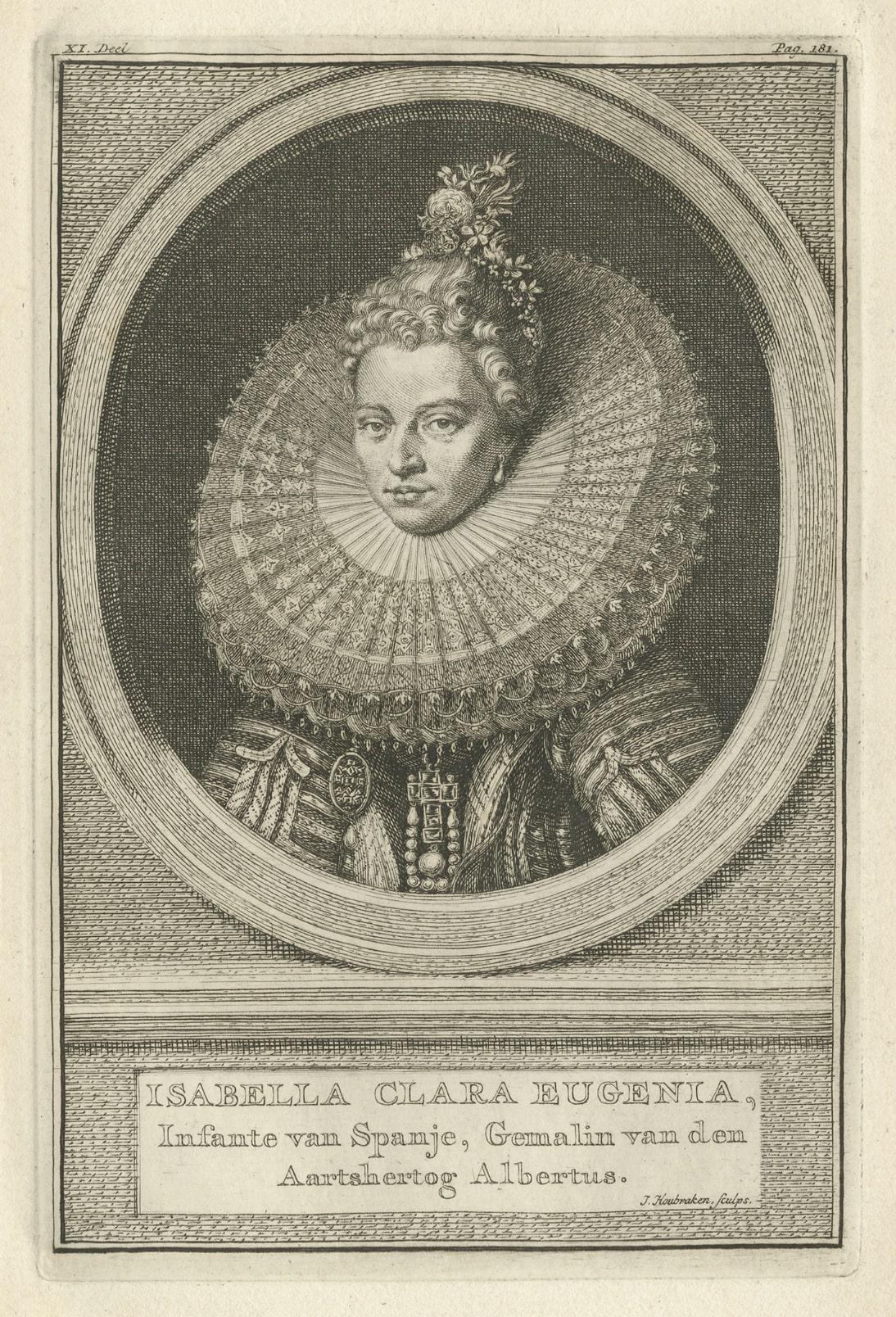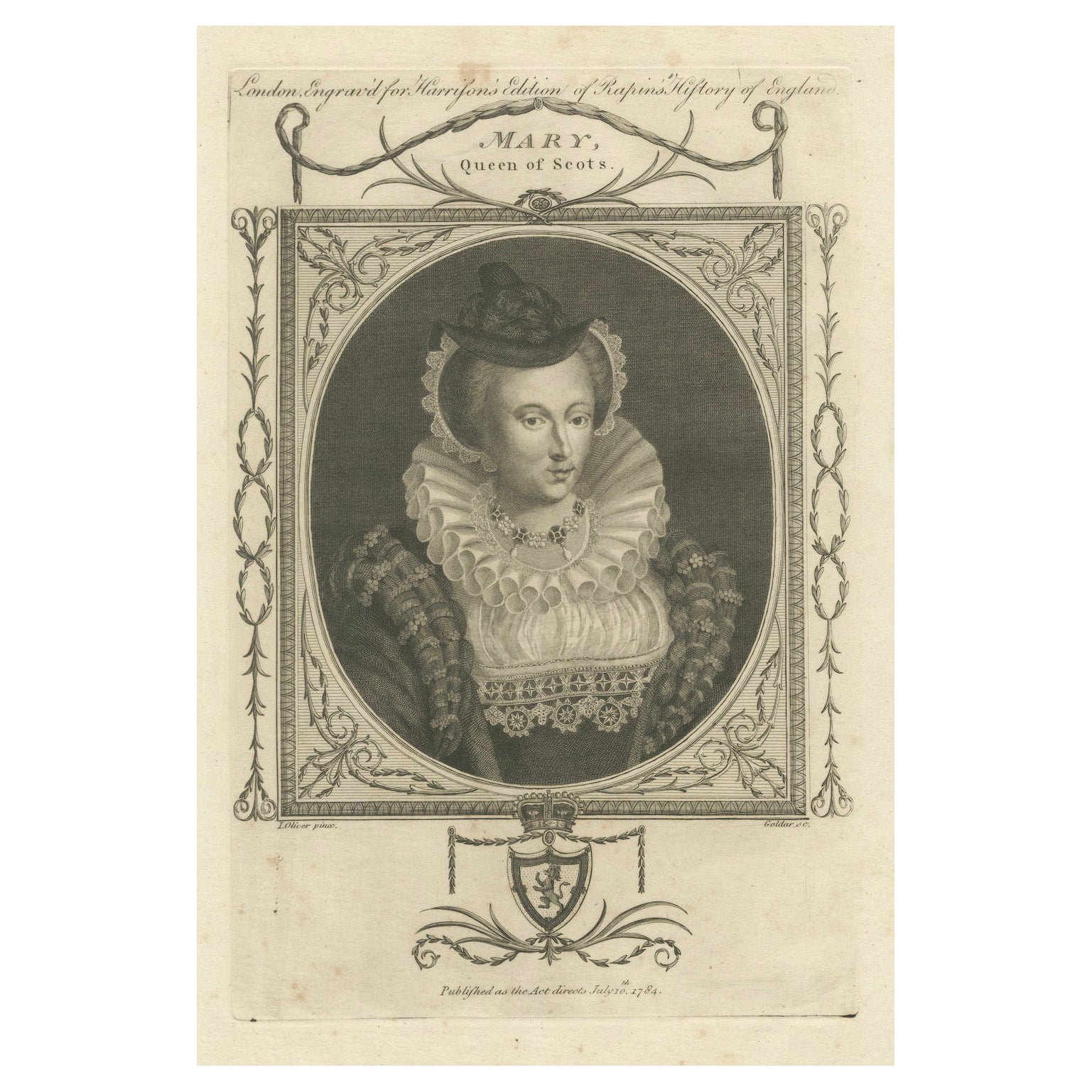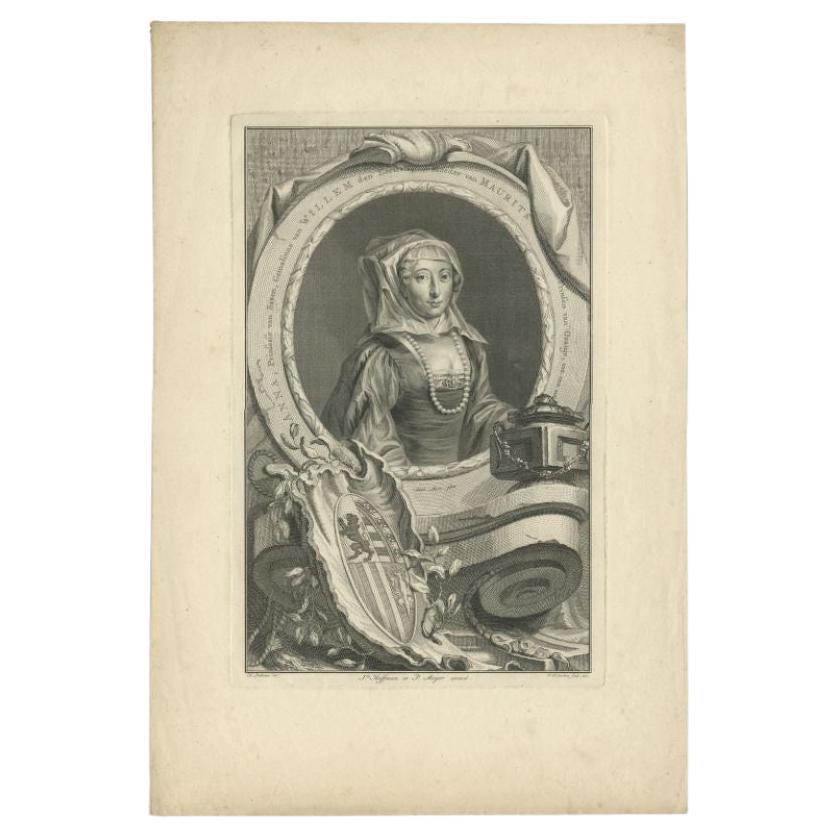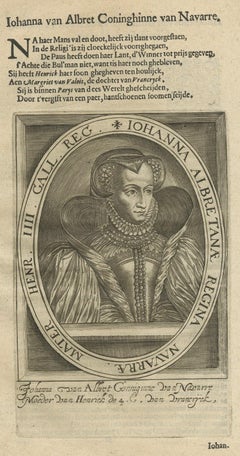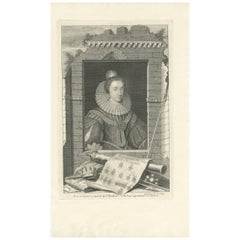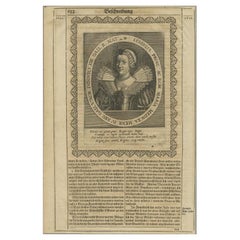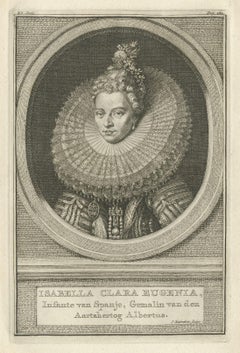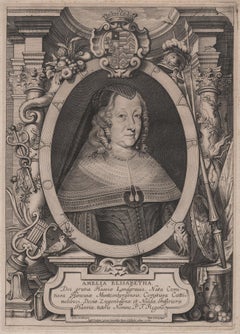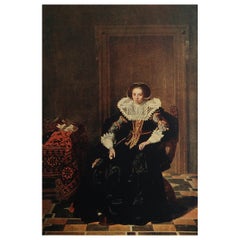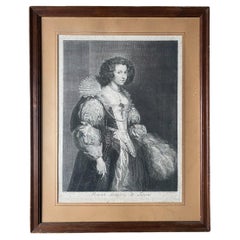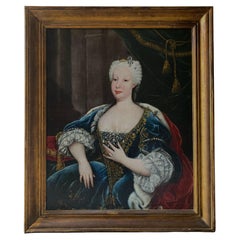Items Similar to Rare Portrait of Magdalena Moon, Heroine of The Siege of Leiden in Holland, 1649
Want more images or videos?
Request additional images or videos from the seller
1 of 5
Rare Portrait of Magdalena Moon, Heroine of The Siege of Leiden in Holland, 1649
$805.15
$1,006.4420% Off
£599.38
£749.2320% Off
€672
€84020% Off
CA$1,102.86
CA$1,378.5720% Off
A$1,226.62
A$1,533.2720% Off
CHF 640.50
CHF 800.6320% Off
MX$14,926.64
MX$18,658.3020% Off
NOK 8,180.19
NOK 10,225.2420% Off
SEK 7,671.57
SEK 9,589.4720% Off
DKK 5,115.70
DKK 6,394.6320% Off
Shipping
Retrieving quote...The 1stDibs Promise:
Authenticity Guarantee,
Money-Back Guarantee,
24-Hour Cancellation
About the Item
Antique print, titled: 'Domicella Magdalena Moonsia'
Very rare half length portrait of Magdalena Moons. Magdalena Moonsia is known as the heroine of the city of Leiden (seen over her right shoulder in the back ground).This print is number 2 of a series of four numbered portraits commemorating key figures in the siege story of Leiden by C. Visscher in collaboration with the publisher Pieter Soutman.
Source unknown, to be determined.
Artists and Engravers: Made by 'Cornelis Visscher' after an anonymous artist. Cornelis Visscher (1629, Haarlem – 1658, Haarlem), was a Dutch Golden Age engraver and the brother of Jan de Visscher and Lambert Visscher.
Condition: Good, given age. Two light horizontal creases left to right. Left edge verso with remnants of tape from former matting. Small repair top right corner. General age-related toning and/or occasional minor defects from handling. Please study scan carefully.
- Dimensions:Height: 16.26 in (41.3 cm)Width: 11.89 in (30.2 cm)Depth: 0 in (0.02 mm)
- Materials and Techniques:
- Period:1640-1649
- Date of Manufacture:1649
- Condition:Wear consistent with age and use.
- Seller Location:Langweer, NL
- Reference Number:Seller: PCT-59317 1stDibs: LU3054326744482
About the Seller
5.0
Recognized Seller
These prestigious sellers are industry leaders and represent the highest echelon for item quality and design.
Platinum Seller
Premium sellers with a 4.7+ rating and 24-hour response times
Established in 2009
1stDibs seller since 2017
2,508 sales on 1stDibs
Typical response time: <1 hour
- ShippingRetrieving quote...Shipping from: Langweer, Netherlands
- Return Policy
Authenticity Guarantee
In the unlikely event there’s an issue with an item’s authenticity, contact us within 1 year for a full refund. DetailsMoney-Back Guarantee
If your item is not as described, is damaged in transit, or does not arrive, contact us within 7 days for a full refund. Details24-Hour Cancellation
You have a 24-hour grace period in which to reconsider your purchase, with no questions asked.Vetted Professional Sellers
Our world-class sellers must adhere to strict standards for service and quality, maintaining the integrity of our listings.Price-Match Guarantee
If you find that a seller listed the same item for a lower price elsewhere, we’ll match it.Trusted Global Delivery
Our best-in-class carrier network provides specialized shipping options worldwide, including custom delivery.More From This Seller
View AllAntique Portrait of Joan of Navarre, Queen of England, 1615
Located in Langweer, NL
Antique portrait titled 'Iohanna Albretanae Regina (..)'. Portrait of Joan of Navarre. This print originates from 'Tooneel der keyseren ende coningen van christenryck sedert den onde...
Category
Antique 17th Century Prints
Materials
Paper
$230 Sale Price
20% Off
Antique Portrait of Elizabeth, Queen of Bohemia, by G. Vertue, circa 1750
By George Vertue
Located in Langweer, NL
Antique print titled 'Elisabeth Pr. Pal: Queen of Bohemia'. Elizabeth, Queen of Bohemia, 1596-1662. Daughter of James VI and I. Engraved by G. Vertue.
Category
Antique Mid-18th Century European Prints
Materials
Paper
Antique Portrait of Marie De Medici, circa 1660
Located in Langweer, NL
Antique portrait titled 'Sereniss Princ Ac Dom Maria Medicea (..)'. Portrait of Marie de Medici, Queen of France. Half length with widow's peak, open c...
Category
Antique 17th Century Prints
Materials
Paper
$153 Sale Price
20% Off
Isabella Clara Eugenia, One of the Most Powerful Women in 16th and 17th-Century
Located in Langweer, NL
Antique portrait titled 'Isabella Clara Eugenia (..)'. Old portrait of Isabella Clara Eugenia. This print originates from 'Vaderlandsche historie, vervattende de geschiedenissen der ...
Category
Antique 18th Century Prints
Materials
Paper
$325 Sale Price
20% Off
1784 Engraved Elegance of Mary, Queen of Scots - Tragic Monarch
Located in Langweer, NL
This is an authentic engraved portrait of Mary, Queen of Scots.
Mary was one of the most fascinating and tragic figures in Scottish and English history. She became queen consort in...
Category
Antique 1780s Prints
Materials
Paper
Antique Portrait of Anna of Saxony, Wife of William of Orange, 1757
Located in Langweer, NL
Antique portrait titled 'ANNA, Prinsesse van Saxen, Gemalinne van WILLEM den Eersten, Moeder van MAURITS Prinsen van Oranje, enz. enz. enz'. Portrait of Anna of Saxony, wife of William of Orange...
Category
Antique 18th Century Dutch Prints
Materials
Paper
You May Also Like
Amelia Elisabetha, mid 17th century Flemish portrait engraving, 1651
Located in Melbourne, Victoria
Flemish portrait engraving, dated 1651, of Amalie Elisabeth of Hanau-Münzenberg (1602–1651), who was Landgravine consort and Regent of Hesse-Kassel. From a series of portraits of the Dignitaries at the Peace of Münster (Pacis Antesignani sive Icones legatorum).
Lettered in open letters around portraits: 'PVR ET LOYAL'. Lettered in cartouche below portrait: 'Amelia Elisabetha / ... / ... Nomine P.T. Regens.' and "Anselmus van Hulle...
Category
17th Century Flemish School Portrait Prints
Materials
Engraving
Original Antique Print. Portrait of A Lady After Thomas De Keyser. C.1900
Located in St Annes, Lancashire
Wonderful print
Chromolithograph
Published by Connoisseur circa 1900
Unframed.
Category
Antique Early 1900s English Baroque Prints
Materials
Paper
A. Van Dyck "Maria Luissa De Tassis" Engraving by C. Vermeulen 17th Century
By Corneille Vermeulen
Located in Beuzevillette, FR
This magnificent etching is a portrait of "Maria Luissa de Tassis", engraved by C. Vermeulen after the painting by A. Van Dyck of 1630. Van Dyck painted in 1630.
Antoine Van Dyck, ...
Category
Antique 17th Century Belgian Prints
Materials
Paper
Portrait of D. Maria Bárbara De Bragança, Circle of Louis-Michel Van Loo
By H. van Loon
Located in Lisboa, PT
PORTRAIT OF D. MARIA BÁRBARA DE BRAGANÇA (1711-1758), QUEEN OF SPAIN
Circle of Louis-Michel van Loo (1707-1771)
Oil on canvas
Her Royal Highness, the Infanta Maria Barbara of Braganza (1711-1758) was the first-born child of King John V of Portugal (1689-1750) and his queen consort Maria Anna of Austria (1683-1754). Born in December 1711, she had the Convent Palace of Mafra built in her honour following a vow made by her royal father. Her status as Princess of Brazil, inherent to 18th century Portuguese presumptive heirs, would however be superseded once the queen gave birth to two male princes, D. Pedro (1712-1714) and D. José (1714-1777), preventing her from ascending to the throne.
Daughter of one of the most illustrious monarchs of his time, Maria Barbara was carefully educated to become a fond admirer of the arts, and of music in particular, having had the Italian composer Domenico Scarlatti (1685-1757) as her music teacher.
On the 10th January 1723 the young princess was betrothed to the Infante Ferdinand of Spain (1713-1759), eldest son of King Philip V (1683-1746). Six years later, on the 19th January, she entered her new country in a carefully choreographed ceremony that became known to history as the “Exchange of the Princesses”. This unique event took place on a specially built Bridge-Palace, a wooden, luxuriously decorated structure that included various modules and rooms, on both banks of the river Caia, the natural border between the town of Elvas in Portugal and of Badajoz in Spain. Simultaneously, on the same day that the Portuguese Infanta crossed the border to marry the Spanish Crown Prince, her new sister in law, the Infanta Mariana Victoria of Bourbon (1718-1781), her husband’s sister, crossed the same bridge in the opposite direction to marry Prince D. José, the Portuguese heir to the throne.
Once married, Maria Barbara would spend 17 years as Princess of Asturias, only becoming Queen of Spain at her husband’s accession following the death of Philip V in 1746. She is portrayed in the 1743 painting by Louis-Michel van Loo (1707-1771) now in the Prado Museum, in which Philip V had himself represented with all his close family.
The new Queen would take an important role at court eventually becoming the liaison between her husband and the King of Portugal, particularly throughout the negotiations for the Treaty of Madrid (1746-1750). Maintaining her interest in music, she patronized the Italian castrato singer Farinelli (1705-1782) while remaining close to her old master Scarlatti, having herself composed some sonatas for a large orchestra. She would also commission and fund the building of the Royal Salesians Monastery complex in central Madrid, where both her and Ferdinand VI are buried.
The portrait we are presenting for sale shows the Queen in half-length, turning left at three quarters. She is wearing a blue low-cut dress embroidered with flowers and foliage, over a lace cuffed white blouse, and an ermine cloak pined on the left-hand side by a diamond broach. The powdered hair style is held sideways by a seven diamond and black plume headdress and topped by a small gold and pearl crown. The right arm rests on a cushion while the left hand, at chest height, holds a miniature male portrait.
The Infanta’s features are analogous to the 1725 portrait by the painter Domenico Duprà (1689-1770), also in the Prado Museum collection. Further similarities can be found in another portrait by Louis-Michel van Loo, in which a seven diamond and black plume headdress is also present. In this work, the cushion supporting Maria Barbara’s right arm has also some obvious similarities to our painting. The same diamond headdress reappears in Van Loo’s above-mentioned portrait of Philip V’s family dated from 1743.
It is nevertheless in Lisbon’s Ajuda National Palace that it is possible to find an almost identical depiction of the Infanta holding a miniature portrait of her husband. In it, the future Ferdinand VI is portrayed facing right at three quarters and wearing a curly wig, suit of armour, the golden fleece insignia and a blue band, in a composition that closely resembles an 18th century Spanish school painting that appeared in the art market in January 2016.
Another detail common to various portraits of the Portuguese Infanta and Queen of Spain is the small gold and pearl crown on her head. In another Van Loo painting, also from the Prado Museum, in which Maria Barbara is portrayed as Queen, this crown is represented together with a headdress similar to the one previously described. Another two paintings by the same artist, at the Royal Academy of Saint Ferdinand, include the same ornament.
We must also refer the paintings by the artist Jean Ranc (1674-1735). In one, dating from 1729 (Prado Museum), the Infanta is depicted outdoors holding a flower bouquet and wearing a yellow silk dress with red cloak, and a set of diamond and ruby jewellery that includes a headdress similar to the one present in our portrait. Another work by the same artist, belonging to the Complutence University of Madrid, depicts the Infanta sumptuously dressed in identical colours to our painting and wearing an elaborate headdress and diadem.
These portraits, beyond their iconographical importance as contemporary records of the Infanta and Queen Maria Barbara, are also illustrative of 18th century fashion for jewelled head dressing. Often, flowers were combined with joyful adornments, composing almost theatrical displays that would reinforce the ostentatious nature of the image. The ornamental flowers and the chromatic character of the jewels would complement the luxury of the colourful dresses in blue, crimson, green or other silk shades, in compositions whose sole purpose was to highlight a royal sitter’s wealth and power, becoming an essential statement accessory within the strict court protocols and codes of conduct.
Circle of Louis-Michel van Loo (1707-1771)
Slowly but steadily, the resolute, tranquil and dignified attitude of Renaissance and Baroque portraiture becomes artificial and presumptuous. Mid 18th century society favours elusive expression and psychological deepness, albeit limited to the face, that, with emphasis on detail, on the rich colour palette and on changing costumes and landscapes, associated to the courtliness of gestures, creates a strongly artificial environment while maintaining a highly poetic intrinsic character.
Louis-Michel van Loo followed a dynasty of famous Dutch origin artists that had settled in France. Initially taught by his father, Jean-Baptiste von Loo (1684-1745), the younger van Loo studied in Turin and Rome and frequented the Paris Academy. In Rome he worked with his uncle Charles-André van Loo (1705-1765) and become a painter for the Turin Court. In 1737 he arrived in Spain being summoned by Philip V to succeed Jean Ranc as painter of the king’s chamber.
In Madrid, his work covers the numerous Court commissions and the Royal Saint Ferdinand Fine Arts Academy, of which he was a founding member and director for the Painting department in 1752. Is production at court consisted essentially of numerous portrait paintings, often Royal gifts...
Category
Antique 18th Century Spanish Baroque Paintings
Materials
Canvas
17th Century English School Portrait of Young Lady as Widow Jane Bromley
Located in Milano, MI
Reputed Portrait of Jane Bromley, as a Young Widow by British, English School, oil on canvas painting circa 1640/1650, in good condition, set in a modern frame. It comes from a priva...
Category
Antique Mid-17th Century Italian Baroque Paintings
Materials
Canvas, Wood
18th Century Elegant Portrait of Noble Lady with Necklace and Pendant
Located in Montreal, QC
18th Century elegant portrait of noble lady with necklace and pendant inset with ruby and emerald stone.
Oil on canvas.
Category
Antique 1750s Italian Paintings
Materials
Canvas
More Ways To Browse
Antique Plow
Antique Salt Bowls
Antique Shamrock
Antique Spring Scale
Antique Street Clock
Antique Thai Buddha Statue
Antique Trough Fountains
Antique Water Kettle
Antique Wood Santos Santo
Art Nouveau Room Divider
Art Nouveau Sugar Bowl
Barbara Barry For Baker
Beetle Model
Blue Swedish Chest
Bone Inlay Dresser
Brass Couple Sculpture
Bruksbo Rosewood
Car Wall Sculpture
